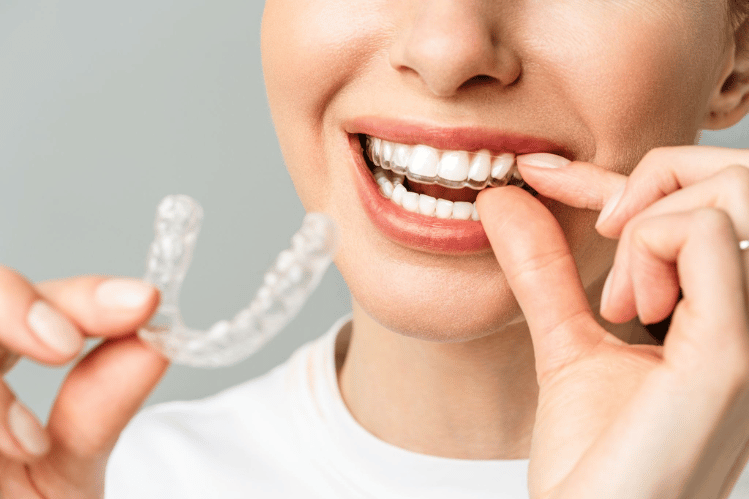An Unbiased View of Legacy Orthodontics
Indicators on Legacy Orthodontics You Should Know
Table of ContentsWhat Does Legacy Orthodontics Mean?An Unbiased View of Legacy OrthodonticsThe smart Trick of Legacy Orthodontics That Nobody is Talking AboutOur Legacy Orthodontics PDFsFacts About Legacy Orthodontics Uncovered
In addition, we provide adjustable therapy routines, adaptable payment choices and a fun, satisfying experience.An orthodontist is a dental professional educated to identify, prevent, and deal with teeth and jaw irregularities. They correct existing conditions and are educated to identify troubles that might create in the future. Orthodontists deal with individuals of every ages, from youngsters to grownups. Individuals typically associate a perfect smile with excellent health and wellness.
Malocclusion, or misaligned teeth, can bring about dental issues, including dental caries, periodontal condition, and challenging or uncomfortable chewing. Not everyone is born with straight teeth. If you have a bad bite or large spaces in between your teeth, you might wish to speak with a dental practitioner concentrating on orthodontic treatment.
The Best Guide To Legacy Orthodontics
( Photo Credit History: DigitalVision/Getty Images) Orthodontists use taken care of and removable oral gadgets, like braces, retainers, and bands, to transform the setting of teeth in your mouth. Orthodontic treatment is for oral irregularities, consisting of: Misaligned teethBite issues, like an overbite or an underbiteCrowded teeth or teeth that are too much apartJaw misalignmentThe objective of orthodontic treatment is to boost your bite.
A healthy bite guarantees you can consume, chew, and talk correctly. While you might consider orthodontists as primarily for kids or young adults who require dental braces, they can deal with oral troubles at any kind of age. Orthodontists participate in university, dental school, and orthodontic school. After college graduation, they invest 2 or 3 years in an orthodontic residency program.
, yet not all dental practitioners are orthodontists. They focus on 2 locations: Exactly how to correctly and securely move teeth How to appropriately lead development in the teeth, jaw, and faceOnce an orthodontist has finished training, they have the alternative to come to be board certified.
Legacy Orthodontics Fundamentals Explained
Imbalance, or malocclusion, is one of the most typical factor people see an orthodontist. It is genetic and is the outcome of dimension differences between the top and reduced jaw or between the jaw and teeth. Malocclusion brings about tooth overcrowding, a misshapen jaw, or irregular bite patterns. Malocclusion is normally treated with: Your orthodontist attaches metal, ceramic, or plastic square bonds to your teeth.
Some individuals need a headwear to help relocate teeth right into line with stress from outside the mouth. A retainer is a personalized gadget that keeps your teeth in place.
They're frequently made use of on kids. They can produce extra room in the mouth without needing to pull teeth. If you have a significant underbite or overbite, you could require orthognathic surgery (likewise called orthodontic surgical treatment) to extend or shorten your jaw. Orthodontists utilize cords, medical screws, or plates to support your jaw bone.
You may require to see an orthodontist if you have: Crowding or not sufficient space for all of your teethOverbite, when your upper teeth come over your base teethUnderbite, when your bottom teeth are as well much forwardSpacing or problems with gapsCrossbite, which is when your top teeth fit behind your base teeth when your mouth is closedOpen bite or a vertical void between your front base and top teethMisplaced midline, when the facility of your base and top teeth don't line up Dealing with a dental malocclusion can: Make biting, eating, and talking easierImprove the balance of our face and your overall appearanceEase discomfort from temporomandibular joint disordersDifferent your teeth and make them easier to cleanse, aiding avoid dental cavity or tooth cavities It's typically a dental practitioner that first notices misaligned teeth during a routine examination.
A Biased View of Legacy Orthodontics

During your first orthodontic appointment, you'll likely have: An oral examPhotos taken of your face and smileDental X-raysPanoramic (360 degree) X-rays of your face and headImpressions to produce mold and mildews of your teethThese examinations will certainly assist your orthodontist know how to continue with your therapy. leesburg braces. An orthodontist is a dental professional that's had training to treat your teeth and jaw
Orthodontists may carry out surgical treatment, exams,X-rays,and even more to assist you acquire a more comfortable, healthier smile. An orthodontist is concentrated on your bite, so something like a cracked tooth would certainly be taken care of by a dental professional. Orthodontists are dentists however not all dental professionals are orthodontists. Orthodontists are concentrated on your bite, or the way your teeth meshed, and the straightness of your teeth.
Ever asked yourself exactly how stars always appear to have perfectly aligned teeth? Orthodontists are oral specialists who concentrate on dealing with irregularities in the teeth and jaws.
Top Guidelines Of Legacy Orthodontics

, orthodontists have a diverse toolkit at their disposal. These reliable braces use a system of brackets bonded to the teeth and connected internet by cords.
Clear aligners, like Invisalign, are a prominent option for clients looking for a more discreet therapy choice. These detachable trays are tailor-made to considerably change the teeth's position. Headgear might be made use of along with braces or aligners to use extra targeted pressures, particularly for correcting jaw discrepancies. In cases of narrow jaws, palatal expanders can be used to create space for correct tooth positioning.